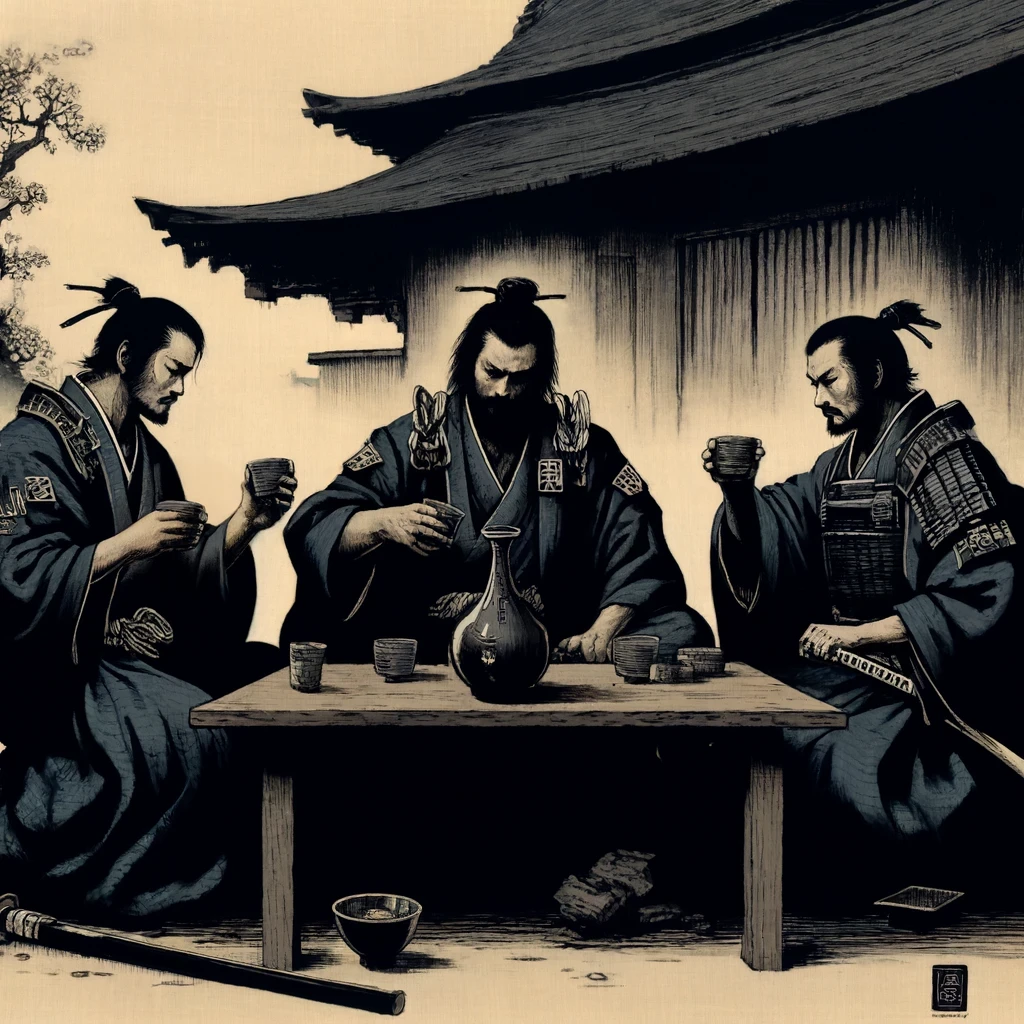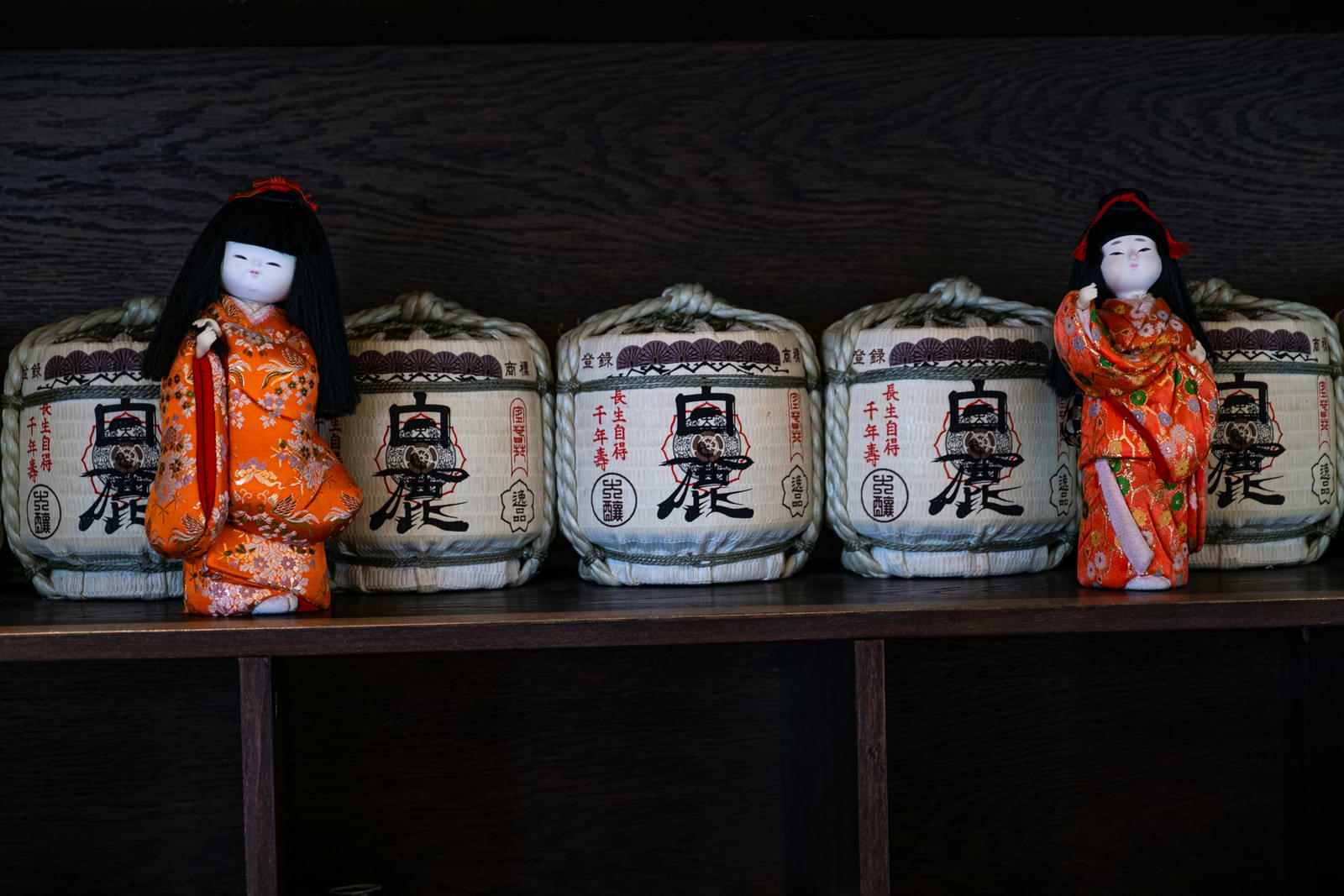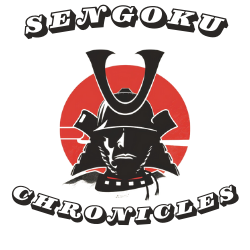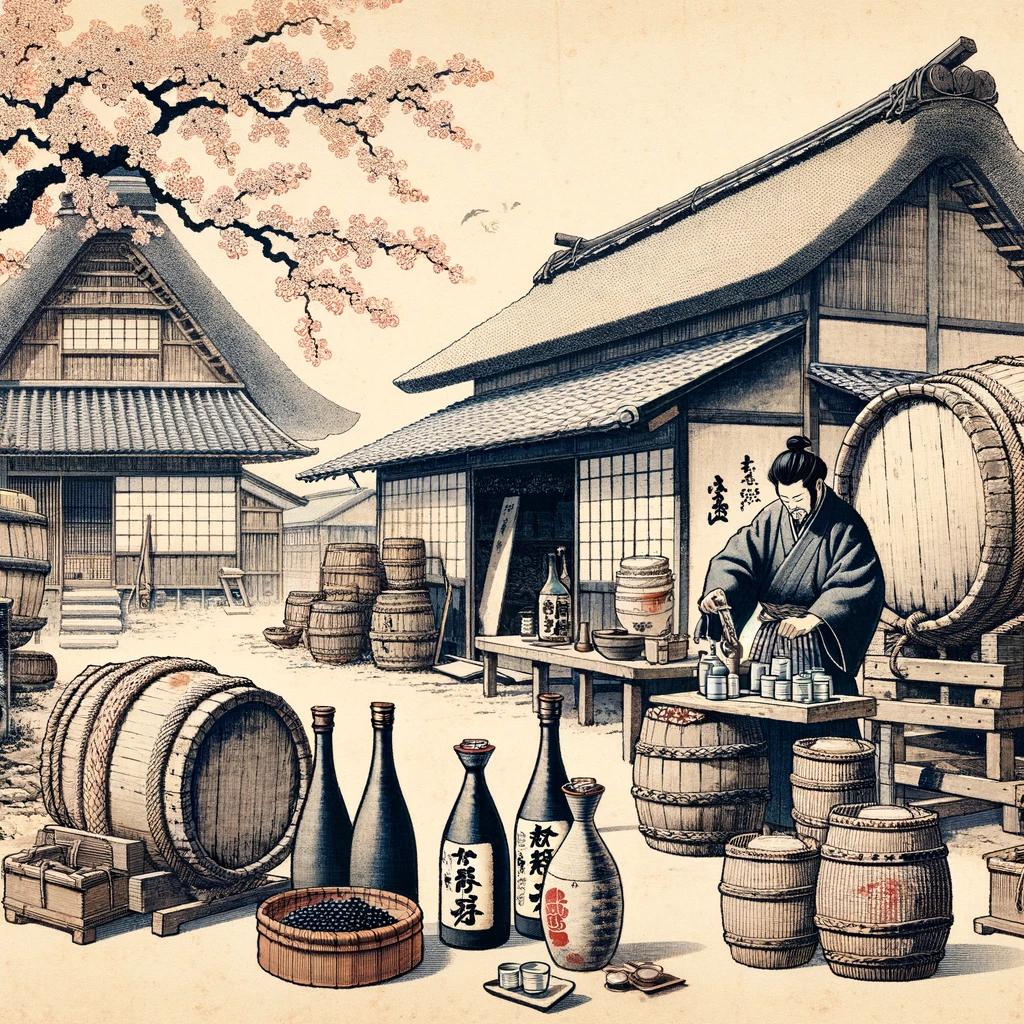Introduction
The Sengoku Era (1467-1615) was a time of turmoil in Japan. Social upheaval, political intrigue, and constant warfare defined this period. Despite the chaos, cultural elements thrived. Among these was sake, a traditional Japanese rice wine.
Sake is more than just a drink. It is deeply woven into Japanese culture. Its brewing process is an art, involving careful steps to turn rice into a beloved beverage.
During the Sengoku Era, sake played many roles. It was a part of daily life, religious rituals, and even military traditions. This blog will explore how sake was made, used, and valued during these tumultuous times.
Understanding sake in the Sengoku Era gives us insight into Japan’s history. It shows how people found ways to preserve culture amidst conflict. Join us as we delve into the fascinating story of sake during one of Japan’s most turbulent periods.
The History of Sake Before the Sengoku Era
Sake has ancient roots in Japan. Its history stretches back over a thousand years. Early sake brewing began with rice cultivation. People discovered that fermenting rice produced a unique drink.
In the Heian period (794-1185), sake brewing evolved. The court and nobility enjoyed sake at banquets and religious ceremonies. Temples and shrines also started brewing sake. They refined techniques and influenced brewing practices.
During the Kamakura period (1185-1333), sake became more widespread. Samurai warriors, as well as common people, began to enjoy it. This period saw the development of new brewing methods. One key advancement was the use of koji mold. Koji mold helps convert rice starches into sugars, essential for fermentation.
The Muromachi period (1336-1573) continued this trend. Brewing techniques improved further. Brewers learned to polish rice to remove the outer layers, enhancing the sake’s flavor. They also refined fermentation processes, leading to higher quality sake.
By the time the Sengoku Era began, sake was already an important part of Japanese culture. It had a long history of development and refinement. This rich heritage set the stage for sake to play a significant role during the tumultuous Sengoku period.
Sake Brewing During the Sengoku Era
The Sengoku Era was a time of great change and innovation for sake brewing. Despite the chaos of war, sake production flourished and saw significant advancements.
Technological Advancements and Innovations
Brewers made several technological advancements during this period. Improved rice polishing methods were one key innovation. By polishing rice more thoroughly, brewers could remove impurities and produce a purer, more refined sake. This process, called seimai, greatly enhanced the flavor and quality of the drink.
The use of koji mold became more sophisticated as well. Koji mold is crucial in converting rice starches into sugars, which then ferment into alcohol. Brewers learned to cultivate and manage koji more effectively, leading to more consistent and higher-quality sake.
Yeast strains also improved during the Sengoku Era. Brewers experimented with different types of yeast to find those that produced the best flavors. This experimentation led to the development of sake with more complex and desirable taste profiles.
Prominent Sake-Producing Regions
Certain regions became renowned for their sake production during the Sengoku Era. Kyoto and Nara were among the most famous. These areas had access to high-quality rice and pure water, both essential for brewing excellent sake. The climate in these regions also favored sake production.
Brewers in these areas developed unique techniques and styles, contributing to the diversity of sake available. The regional differences in resources and climate influenced the flavor and character of the sake, making each region’s product distinct.
Impact of War on Sake Production
The constant warfare of the Sengoku Era presented challenges for sake production. Battles and political instability disrupted supply lines and made it difficult to secure the necessary ingredients for brewing. However, brewers adapted by finding local sources for rice and water and developing methods to protect their supplies.
Some daimyos (feudal lords) recognized the importance of sake for morale and social cohesion. They supported local brewers and ensured that sake production continued despite the conflicts. This support helped maintain a steady supply of sake for both soldiers and civilians.
Sake brewing during the Sengoku Era was marked by innovation and adaptation. Brewers developed new techniques and improved existing ones, resulting in higher-quality sake. Key regions like Kyoto and Nara became famous for their distinctive brews. Despite the challenges of war, sake production continued to thrive, contributing to the rich cultural tapestry of the period.
Sake and the Samurai Class

During the Sengoku Era, the samurai class held a significant place in Japanese society. Sake played an important role in their culture, symbolizing power, prestige, and camaraderie.
Role of Sake in Samurai Culture
Sake was deeply integrated into the lives of the samurai. It was present in many of their rituals and ceremonies. Before battles, samurai would often partake in sake to boost morale and strengthen bonds among comrades. Drinking together fostered a sense of unity and loyalty, which was crucial in the face of conflict.
After battles, sake played a role in celebrations and commemorations. Victories were toasted with sake, and fallen comrades were honored with sake offerings. These practices highlighted the importance of sake in both joyful and solemn occasions.
Sake as a Symbol of Power and Prestige
In the samurai class, sake was not just a drink; it was a symbol of status. High-quality sake was often given as gifts and tributes among daimyos and their vassals. The exchange of sake was a way to show respect and build alliances. Receiving fine sake from a superior was a mark of favor and recognition.
Sake also played a role in diplomatic relations. It was used in negotiations and peace treaties, often presented to seal agreements. The quality and quantity of sake offered could influence the outcome of such discussions, making it a strategic tool in the hands of savvy samurai leaders.
Influence on Social Hierarchy and Relationships
Sake influenced the social hierarchy within the samurai class. The type of sake one could afford and consume reflected their social standing. High-ranking samurai had access to the best brews, while lower-ranking warriors and common soldiers drank more basic varieties. This distinction reinforced the social order and highlighted differences in status.
Additionally, sake was used in various social gatherings and events hosted by samurai. These occasions provided opportunities for networking and relationship-building. Sharing sake helped establish and strengthen bonds between samurai, fostering loyalty and mutual support.
Sake was more than just a beverage for the samurai class during the Sengoku Era. It was a vital part of their culture, symbolizing power, prestige, and unity. Through rituals, gift-giving, and social gatherings, sake played a crucial role in shaping the social dynamics and relationships within the samurai community.
Sake in Everyday Life
During the Sengoku Era, sake was not just a luxury for the elite; it was an integral part of everyday life for people across all social classes. Its presence was felt in various aspects of daily activities, from social gatherings to economic contributions.
Sake in Peasant and Merchant Life
For peasants and merchants, sake was more than just a drink; it was a staple of daily life. Despite the chaos of the era, sake remained accessible to many. Peasants brewed their own sake at home or purchased it from local breweries. It was an affordable luxury that provided comfort and a sense of normalcy amidst the turmoil.
Merchants, on the other hand, often traded sake as part of their business. Sake was a valuable commodity, and its trade contributed to the local economy. Merchants would buy and sell sake, spreading its availability and fostering economic interactions between regions.
Role in Local Festivals and Communal Gatherings
Sake played a central role in local festivals and communal gatherings. These events were opportunities for people to come together, celebrate, and strengthen community bonds. Sake was used in religious festivals, agricultural celebrations, and seasonal events, marking the passage of time and the changing seasons.
In villages and towns, sake was often shared during communal meals and gatherings. These occasions allowed people to connect, share stories, and create memories. Sake helped foster a sense of community and solidarity, which was especially important during the uncertain times of the Sengoku Era.
Social and Economic Impact of Sake Production
The production of sake had a significant social and economic impact on local communities. Sake breweries became central hubs of activity, providing employment and supporting the local economy. Brewers, workers, and their families all depended on the sake industry for their livelihoods.
Breweries also fostered social interactions and community ties. They were places where people gathered, shared news, and formed relationships. The success of a brewery could elevate the status of a village or town, bringing prosperity and recognition.
Establishment of Sake Breweries as Community Hubs
Many sake breweries were more than just production sites; they were community hubs. These breweries often hosted events, festivals, and social gatherings. They became places where people could come together, celebrate, and build relationships.
Breweries also played a role in supporting local traditions and customs. They sponsored festivals, contributed to religious ceremonies, and provided sake for communal events. This involvement strengthened their ties to the community and ensured their importance in everyday life.
Sake was a vital part of everyday life during the Sengoku Era, transcending social classes and becoming a cornerstone of communal activities. Its role in local festivals, economic contributions, and social gatherings underscored its significance. The presence of sake breweries as community hubs further highlighted sake’s importance in fostering connections and supporting local traditions.
Sake and Religion
During the Sengoku Era, sake held a profound spiritual significance and was closely intertwined with religious practices in Japan. Its role in Shinto and Buddhist rituals showcased its importance beyond mere consumption, serving as a bridge between the earthly and the divine.
Shinto Rituals and Sake Offerings
In Shintoism, sake was considered a sacred offering to the gods (kami). It played a crucial role in purification and blessing ceremonies. Known as “omiki” when offered to the gods, sake was believed to purify and sanctify spaces and objects.
Shinto rituals often included sake as a central element. During festivals, or matsuri, large quantities of sake were prepared and offered to the kami to seek their favor and blessings. These offerings were a way to thank the gods for their protection and to pray for a bountiful harvest, good health, and prosperity.
Sake was also used in weddings and other life milestones within the Shinto tradition. The san-san-kudo ceremony, a traditional part of Shinto weddings, involves the bride and groom taking three sips each from three cups of sake, symbolizing the bonding of the couple and their families.
Use in Agricultural Rites
Agricultural rites heavily incorporated sake, emphasizing its importance in ensuring successful harvests. Farmers would offer sake to the gods before planting and after harvesting. These rituals were believed to secure divine protection and ensure the fertility of the land.
The New Year’s celebrations, another important event, saw the use of sake in rituals to welcome the new year and seek blessings for the coming months. Special sake, known as “toso,” was consumed to cleanse the body and soul, driving away evil spirits and bringing good fortune.
Buddhist Influence on Sake Brewing
Buddhism also had a significant impact on sake brewing during the Sengoku Era. Many Buddhist temples were involved in sake production. Monks, who had access to education and scholarly resources, refined brewing techniques and improved the quality of sake.
The involvement of temples in brewing was partly due to their need for a stable income. Sake production provided a reliable source of revenue, which supported the temples’ religious and educational activities. The monks’ meticulous approach to brewing resulted in some of the finest sake, known for its purity and high quality.
Impact on Brewing Techniques and Quality
The influence of Buddhist monks extended to the technological advancements in sake brewing. Their disciplined and methodical approach led to innovations in the brewing process. Monks introduced more precise methods of rice polishing, fermentation, and storage, which improved the overall quality of sake.
Temples often became centers of brewing excellence, and their sake gained a reputation for being some of the best available. This not only elevated the status of the temples but also contributed to the spread of advanced brewing techniques throughout Japan.
Sake’s role in religion during the Sengoku Era highlighted its spiritual and cultural significance. In Shintoism, it was a sacred offering used in various rituals to seek divine favor and blessings. Buddhism’s influence on sake brewing led to significant advancements in production techniques, enhancing the quality of sake and establishing temples as centers of brewing excellence. The intersection of sake and religion during this period underscores the deep-rooted connection between this cherished beverage and the spiritual life of the Japanese people.
Sake During Wartime
The Sengoku Era was marked by nearly constant warfare, impacting all aspects of Japanese society, including sake production and consumption. Despite the turmoil, sake remained an essential part of life for both soldiers and civilians, influencing morale, strategy, and social interactions.
Supply and Distribution Challenges
Wartime presented significant challenges for sake production and distribution. Battles and sieges disrupted supply lines, making it difficult to secure the necessary ingredients, such as rice and water. Additionally, the destruction of infrastructure and farmland affected the availability of resources.
To overcome these challenges, sake brewers and suppliers had to adapt. They sought out local sources of ingredients to reduce dependency on long-distance transport. Brewers also developed methods to protect their supplies from being plundered by enemy forces. These strategies ensured a continued, albeit sometimes limited, production of sake even during periods of intense conflict.
Securing Sake Supplies for Armies
For samurai armies, sake was a crucial resource. Commanders understood its importance in maintaining morale and discipline among their troops. They often made securing a steady supply of sake a priority. Sake was included in provisions for soldiers, both as a morale booster and as a means of fostering camaraderie.
During long campaigns, armies would carry portable sake brewing equipment. This allowed them to produce sake on the move, ensuring a continuous supply. Commanders also formed alliances with local brewers to guarantee access to sake. These relationships were mutually beneficial, providing brewers with protection and soldiers with the sake they valued.
Sake as a Morale Booster
Sake played a significant role in boosting the morale of soldiers. Before battles, it was customary for samurai to drink sake in a ritual known as “kishō” to calm their nerves and strengthen their resolve. This practice helped foster a sense of unity and shared purpose among the warriors.
After battles, sake was used to celebrate victories and honor the fallen. Drinking together helped soldiers bond and recover from the stresses of combat. The communal consumption of sake reinforced the sense of brotherhood and loyalty within the ranks.
Sake in Peace Negotiations and Alliances
Sake also played a role in diplomacy during the Sengoku Era. It was often used in peace negotiations and the formation of alliances. Offering sake was a gesture of goodwill and trust, signaling a desire for cooperation and mutual benefit.
Daimyos would present high-quality sake as gifts to potential allies, using it as a tool to smooth over negotiations and build relationships. The exchange of sake in these contexts was a strategic move, helping to secure political and military advantages.
Despite the constant warfare of the Sengoku Era, sake remained a vital part of Japanese life. Brewers adapted to the challenges of wartime, ensuring a continued supply of this cherished beverage. For soldiers, sake was a crucial morale booster and a symbol of camaraderie. It also played a role in diplomacy, helping to forge alliances and negotiate peace. The enduring presence of sake during these turbulent times underscores its deep cultural significance and its ability to bring people together, even in the face of conflict.
Famous Sake Breweries and Brands
During the Sengoku Era, several sake breweries established themselves as leaders in the industry, producing high-quality sake that gained widespread acclaim. These breweries, some of which still exist today, laid the foundation for Japan’s rich sake-making tradition.
Notable Breweries Established During the Sengoku Era
- Kiku-Masamune (Founded in 1659)
- Although officially founded slightly after the Sengoku Era, Kiku-Masamune traces its roots back to this period. Located in the Nada district of Kobe, this brewery became known for its dry, crisp sake. Its strategic location near the best rice-producing regions and access to pure water sources contributed to its success.
- Sawanotsuru (Founded in 1717)
- Another brewery with origins close to the Sengoku Era, Sawanotsuru is also based in the Nada district. This brewery focused on perfecting traditional brewing techniques, earning a reputation for producing high-quality sake with a clean, refreshing taste.
- Tatsuuma-Honke (Founded in 1662)
- Tatsuuma-Honke, the producer of the Hakushika brand, is another notable brewery from the Nada district. Its commitment to quality and innovation helped it become one of the most respected names in sake brewing.
Historical Significance and Legacy
These breweries not only produced high-quality sake but also contributed to the advancement of brewing techniques. Their dedication to craftsmanship and innovation set standards that influenced the entire industry. Many of the methods they developed, such as improved rice polishing and fermentation techniques, became integral to the sake-making process.
Contributions to the Sake Industry
The contributions of these breweries extended beyond their products. They played a crucial role in elevating the status of sake, transforming it from a local beverage into a nationally recognized product. Their success inspired other brewers to adopt and refine their methods, leading to a broader improvement in sake quality across Japan.
Enduring Brands with Sengoku Era Origins
- Gekkeikan (Founded in 1637)
- Located in Fushimi, Kyoto, Gekkeikan is one of Japan’s oldest sake breweries. Its longevity and continued success are testaments to its commitment to quality and innovation. Gekkeikan’s sake is known for its smooth, well-balanced flavor, making it a favorite among sake enthusiasts.
- Hakurakusei (Founded in the 17th century)
- Based in the Miyagi Prefecture, Hakurakusei is another enduring brand with roots in the Sengoku Era. The brewery’s focus on purity and refinement has earned it a loyal following. Hakurakusei’s sake is celebrated for its delicate, elegant taste.
Survival and Adaptation Through Centuries
These breweries have survived and thrived through centuries of change by continuously adapting to new technologies and consumer preferences. Their ability to balance tradition with innovation has allowed them to maintain their reputations for excellence. Today, they are celebrated not only for their historical significance but also for their ongoing contributions to the sake industry.

The Sengoku Era saw the rise of several notable sake breweries that laid the groundwork for Japan’s rich sake-making heritage. Through their dedication to quality and innovation, these breweries set standards that have endured for centuries. Their legacy continues to influence the sake industry today, ensuring that the art of sake brewing remains a vital part of Japanese culture.
Overall
The Sengoku Era was a time of immense change and turmoil in Japan, yet it was also a period where cultural traditions, including sake brewing, thrived and evolved. Sake, with its deep historical roots and cultural significance, played a vital role in various aspects of life during this tumultuous period.
From its early beginnings, sake had already established itself as a cherished part of Japanese culture. During the Sengoku Era, advancements in brewing techniques and the dedication of renowned breweries elevated sake to new heights of quality and sophistication. The samurai class, with their rituals and ceremonies, further embedded sake into the social and cultural fabric of the time.
Sake’s role extended beyond the elite, touching the lives of peasants and merchants, and serving as a unifying force in communities through festivals and social gatherings. Its significance in religious practices, both in Shinto and Buddhist traditions, highlighted its spiritual importance. Even amidst the chaos of war, sake remained a critical resource, boosting soldiers’ morale and playing a strategic role in diplomacy and alliances.
The enduring legacy of sake from the Sengoku Era is seen in the continued prominence of historical breweries and the ongoing appreciation of sake as an art form and cultural treasure. The resilience and adaptability of sake brewers through centuries of change have ensured that this beloved beverage remains a symbol of Japanese heritage and craftsmanship.
Understanding the multifaceted role of sake during the Sengoku Era provides a unique insight into Japan’s history. It reveals how a simple rice beverage could become a powerful cultural symbol, shaping and reflecting the values, traditions, and resilience of a nation in flux. As we raise a cup of sake today, we toast not just to the drink itself, but to the rich history and enduring spirit it represents.
Additional Resources
For readers interested in delving deeper into the history and cultural significance of sake during the Sengoku Era, the following resources provide a wealth of information:
Books:
- “Sake Confidential: A Beyond-the-Basics Guide to Understanding, Tasting, Selection, and Enjoyment” by John Gauntner
- This book offers an in-depth look at sake, from its history and production methods to tips on tasting and selecting the best brews.
- “The History of Japanese Sake Brewing” by Masayuki Yoshihara
- A comprehensive guide to the evolution of sake brewing, with a particular focus on historical periods including the Sengoku Era.
- “Samurai and Sake: The Intersection of Warrior Culture and Japanese Rice Wine” by Hiroshi Okada
- This book explores the relationship between the samurai class and sake, highlighting its cultural and ceremonial significance.
Articles and Journals:
- “Sake and Society: The Role of Rice Wine in Japanese Culture” – Journal of Japanese Studies
- An academic article examining the social and cultural impacts of sake throughout Japanese history, with insights into the Sengoku Era.
- “Brewing Techniques and Innovations in Sengoku Japan” – Historical Brewing Journal
- A detailed exploration of the technological advancements in sake brewing during the Sengoku Era.
Websites and Online Resources:
- Sake World (www.sake-world.com)
- Managed by sake expert John Gauntner, this site provides extensive information on sake types, brewing methods, and cultural significance.
- National Research Institute of Brewing (NRIB) (www.nrib.go.jp)
- The NRIB offers resources and research findings on sake brewing, including historical studies and technical advancements.
- Japan Sake and Shochu Makers Association (www.japansake.or.jp)
- This organization provides a wealth of information on sake breweries, types of sake, and the history of sake production in Japan.
Museums and Cultural Sites:
- Gekkeikan Okura Sake Museum (Kyoto)
- Located in Fushimi, Kyoto, this museum offers a deep dive into the history of sake brewing with exhibits on traditional tools, techniques, and the evolution of sake production.
- Hakutsuru Sake Brewery Museum (Kobe)
- This museum, situated in one of Japan’s most famous sake-producing regions, provides a comprehensive overview of the sake brewing process and its history.
- Kura No Sato (Sake Brewery Village) in Niigata
- A cultural site where visitors can tour historical sake breweries, learn about brewing methods, and taste various types of sake.
Documentaries and Videos:
- “The Birth of Sake” – Directed by Erik Shirai
- This documentary provides an intimate look at the traditional methods of sake brewing, capturing the dedication and craftsmanship of Japanese brewers.
- “Sake: The Soul of Japan” – NHK World
- A documentary that explores the cultural and historical significance of sake in Japan, featuring interviews with brewers and historians.
- YouTube Channels: “Sake on Air” and “Sake School of America”
- These channels offer educational videos on sake brewing, tasting, and cultural aspects, making them great resources for enthusiasts and learners alike.
These resources provide a comprehensive understanding of sake’s rich history and its enduring cultural significance, offering readers multiple avenues to explore this fascinating topic in greater detail.

